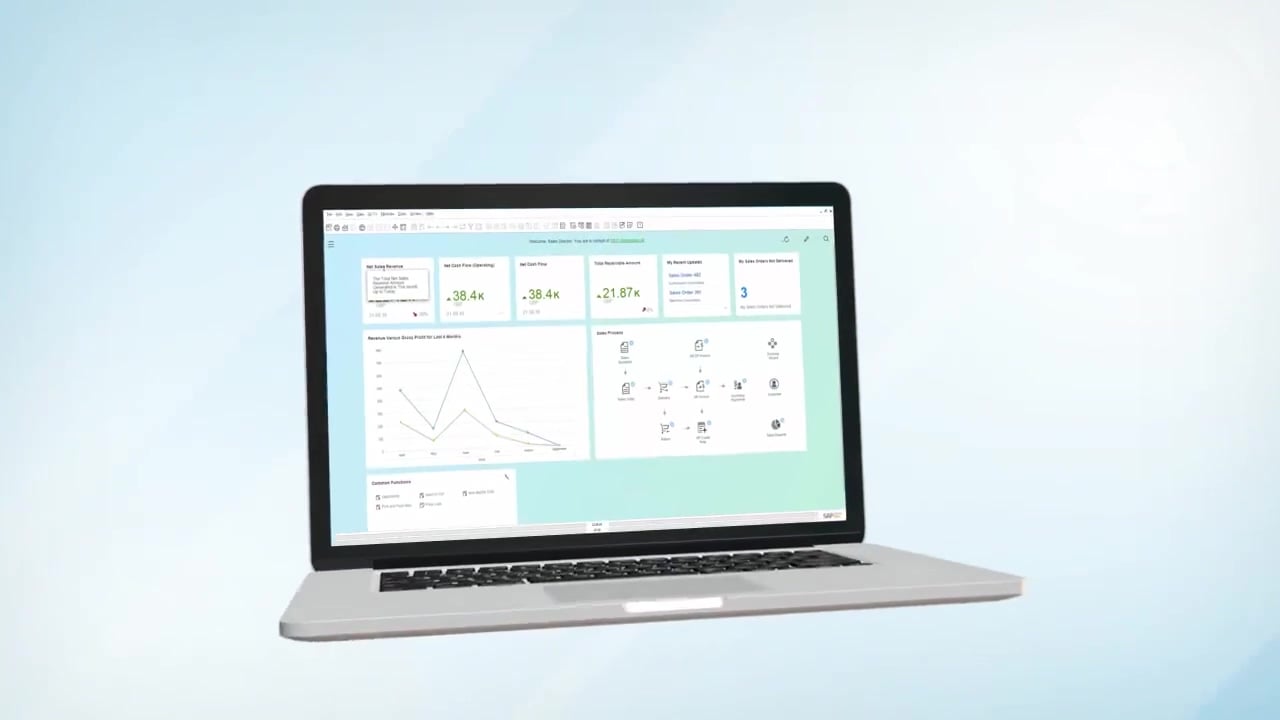
Advantages & Disadvantages of ERP
A cloud-based Enterprise Resource Planning (ERP) software platform can help companies of any size adopt new business models and manage business change at speed. The viability of cloud-based ERP has exponentially increased in recent years.
ERP solutions such as SAP ByDesign aren’t just used by smaller businesses; they also enable mid-market businesses to cut major costs and scale up without complexity. No software solution is perfect, however, and ERP is no exception. So let’s look at the advantages and disadvantages of ERP.
Advantages of ERP Packages
ERP is a modular, comprehensive business software solution that assists with almost all areas of a business. So when talking about the advantages of ERP, we’re really talking about the advantages of ERP packages, since ERP is a collection of software packages.
Some of the key advantages of ERP packages include:
- Data integration and real-time information. The most important benefit of using an ERP system is that it keeps your data clean by reducing the need for data re-entry, thus minimizing human errors. ERP connects all data across business functions, enabling data consolidation and integration and creating a “single source of truth” that’s useful for analyzing and sharing information across departments. This enables real-time data analysis for up-to-date and accurate decision-making.
- Accounting and finance. ERP software supports financial processes to improve accuracy and automate financial reporting. Businesses no longer need to wait for monthly reports, and can get financial status updates daily.
- Multi-currency support and international tax compliance. ERP serves firms operating in multiple countries by efficiently handling cross-border sales and compliance with different tax rules.
- Supply chain management. ERP is tailored for managing complex supply chains, enabling just-in-time delivery and tracking production, and even supporting multi-location shipping.
- Sales and marketing. ERP can connect sales, marketing, and customer service functions to enable businesses to get customer insights, analyze preferences and behavior, and deliver personalized experiences.
- Human resource management. ERP supports automating the entire chain of human resources processes, including recruitment, payroll, and benefits processing for employees or contractors in different geographies, and training or moving through a career growth path.
- Subscription-based pricing. You’d need to spend capital costs upfront on an on-premise ERP system in order to acquire the expensive licensing fee to use the business planning software. However, cloud-based ERP’s pricing is subscription-based, which makes it an ongoing operating cost. This creates a lower barrier of entry for midsize businesses and makes it easier for them to make the jump to ERP.
- Advanced digital security. Digital security measures can be expensive to purchase for an on-site server running on-premise ERP. However, third-party, cloud-based ERP providers protect data for hundreds of clients by investing in advanced digital security. Cloud-based ERP users get powerful, reliable security that is built into the pay-as-you-go pricing structure.
- Scalability in line with business growth. Cloud-based ERP software allows businesses to pick and choose the services and functions they’ll deploy. They only pay for what their users need, providing the flexibility to grow and shrink ERP capabilities to meet business demands. This proves useful when a company goes through periods of transition—for instance, it can make the integration of two firms as part of a merger and acquisition (M&A) process quicker and easier.
Disadvantages of ERP
Most of the disadvantages of an ERP system stem from the complexity and all-encompassing nature of the software. On-premise ERP solutions suffer from these disadvantages in particular since cloud-based ERP solutions such as SAP Business ByDesign are managed in the cloud and thus get constant improvements to reduce downsides.
- Complexity and risks of failure. Many ERP projects fail because business processes and data needs are found to be too complex during the requirements gathering process, and because employees are unwilling to participate in change management. Over a long deployment process, the ERP system might not keep pace with changes that the business needs to make in a dynamic environment of intense competition. This leads to unsuccessful IT projects.
- High-cost license fees. An on-premise ERP system deployment requires an investment in hardware, installation, and software configuration. Businesses have to pay not just for an upfront license fee, but also for all the modules and features in a complete software suite—even those features they have no plans to use.
- The infrastructure required for ERP implementation. Traditional on-premise ERP requires on-site servers and networking infrastructure in the company’s data center. These must be powerful enough to handle massive amounts of data and require additional security measures to protect that data. The Infrastructure required for ERP implementation can be significant.
- Long deployment periods. The lifecycle of on-premise ERP, from requirement to go-live, tends to be long, as it involves many departments and business functions, and requires the willingness to change from both management and employees.
A cloud-based ERP system can hit the sweet spot between the advantages of ERP and the downsides associated with on-premise systems. Cloud-based ERPs such as SAP S/4HANA Cloud Public Edition and SAP Business ByDesign can help businesses increase efficiency, uncover new opportunities, and make decisions in real time.
Contact us to learn more about how modern ERP can give you visibility and control over your entire business.